Off the eastern coast of Sardinia, there’s a treasure that seems straight out of a fairy tale—Cala Goloritzé beach. I’ll never forget my first glimpse of those limestone cliffs and the ridiculously clear turquoise water. That view alone made the whole trip worth it.
Getting to this Italian paradise isn’t easy. You either hop on a boat from places like Cala Gonone or Santa Maria Navarrese, or you tackle a tough hike. That’s why Cala Goloritzé stays so pristine and blissfully uncrowded.
Sardinia’s hidden beaches really capture the Mediterranean at its most magical. Cala Goloritzé is just one gem among many on this coastline. When I visited last summer, our little boat slipped through the Gulf of Orosei, uncovering cove after cove—Cala Sisine’s dramatic backdrop, and a string of beaches you can only reach by sea.
Honestly, the boat journey is half the fun. You get to see Sardinia’s rugged coastline from a whole new angle—something you just can’t do on land. I always book a 4-hour guided boat excursion to find the secret spots, and the local captains know exactly when to go to dodge the crowds. Dropping anchor in your own private slice of Mediterranean heaven? There’s nothing like it. The water is so clear, you almost forget it’s there.
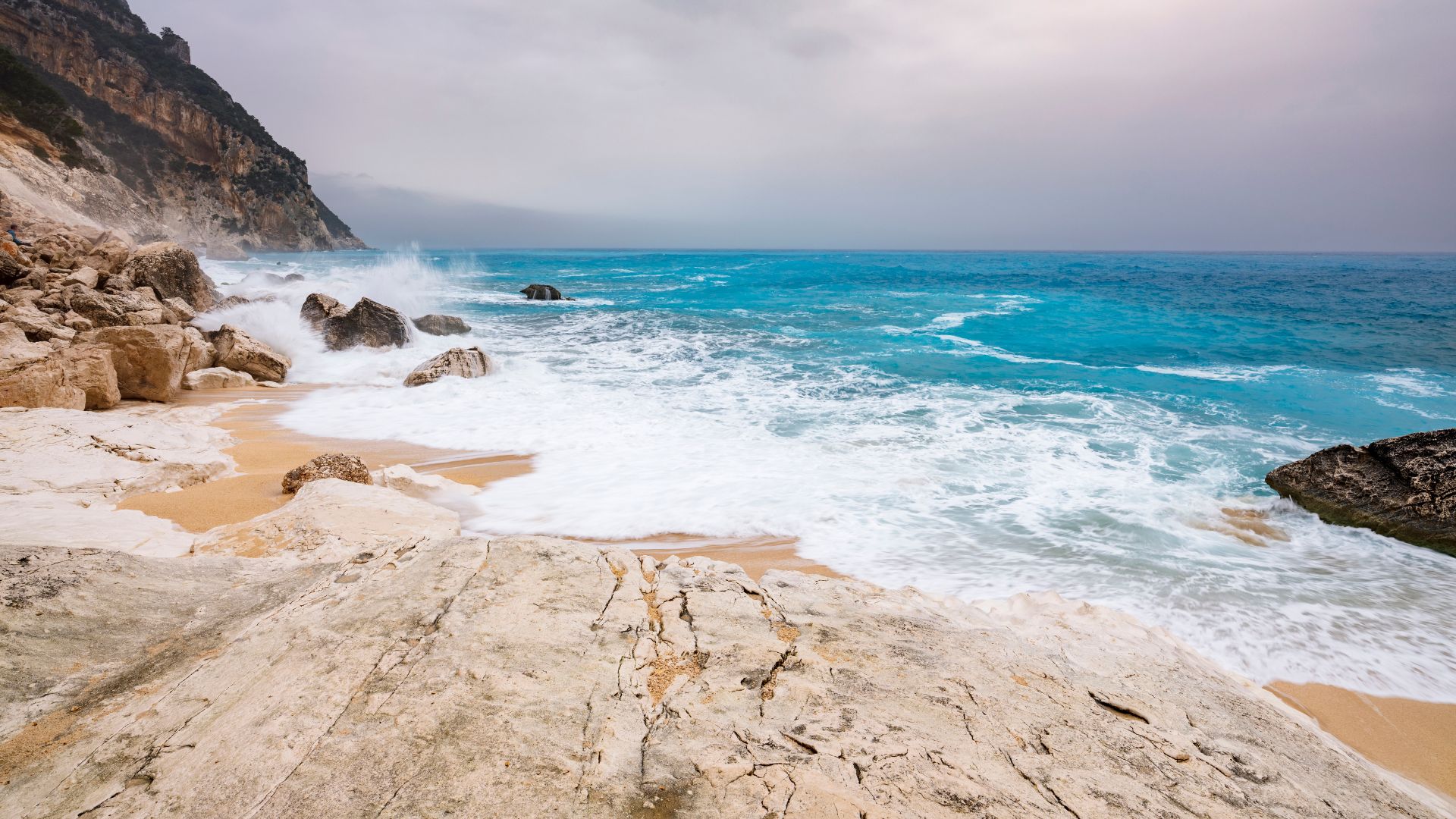
Setting Sail: Planning Your Boat Journey to Hidden Sardinian Beaches
Planning a boat trip along Sardinia’s coast takes a bit of strategy if you want to find those secret paradises. The right boat, smart departure points, and good packing make all the difference.
Choosing the Right Boat for Your Adventure
Picking the right boat really matters for hidden beaches. If you’re planning to spend a few days along Costa Smeralda, I’d go for a yacht or sailboat—they’re comfy and have the range. For day trips, a small motorboat (10-40 feet) lets you sneak into shallow waters and tiny coves.
If you’re new to boating, stick with guided excursions. Loads of 4-hour tours run daily in summer, and the captains handle all the tricky stuff. If you know your way around a boat, bareboat charters give you total freedom.
Budget plays a role, of course. Expect daily motorboat rentals to start around €150, and week-long yacht charters from €2,500. I’ve found June to be the sweet spot—great weather, not too many people yet.
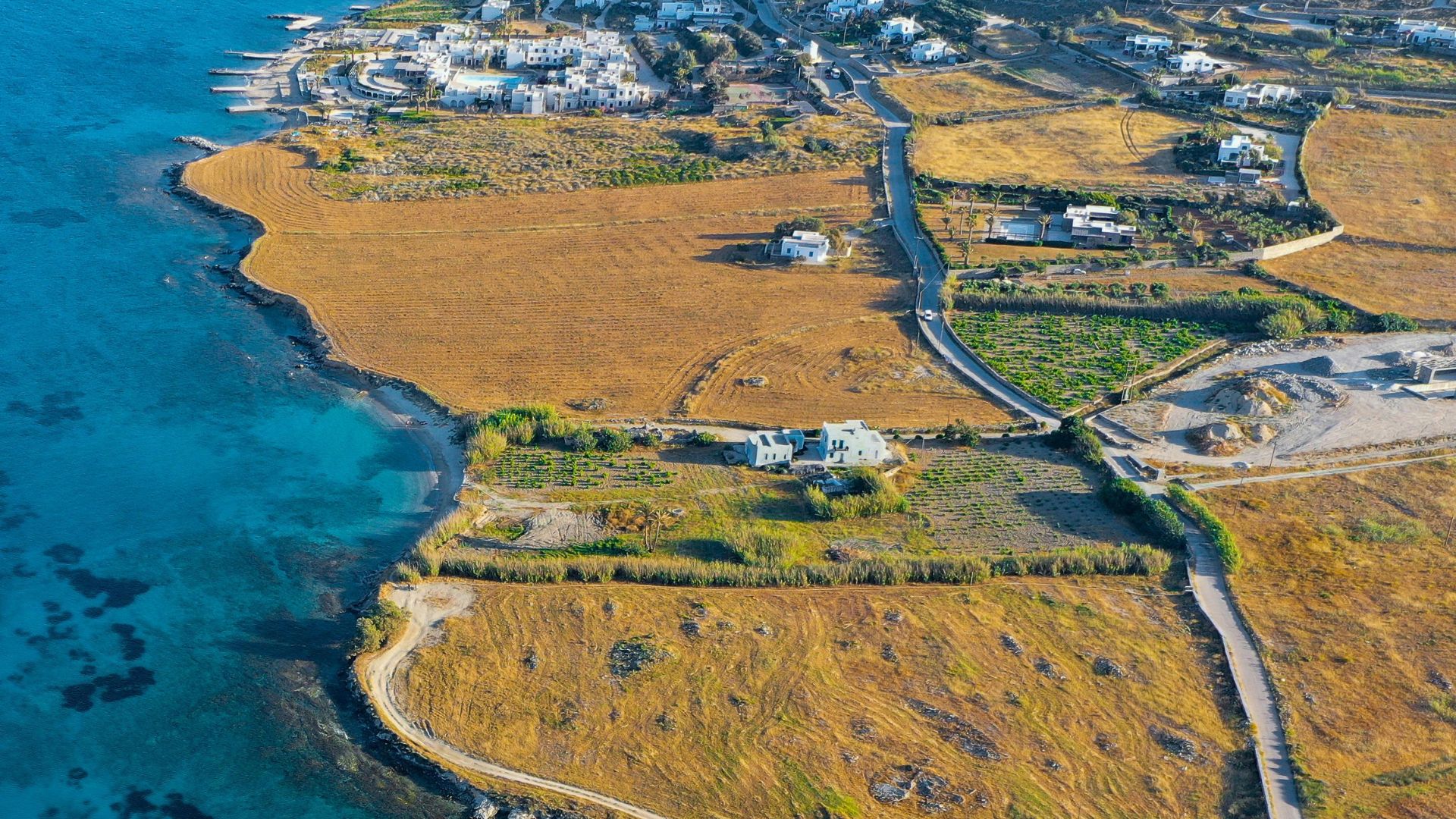
Best Departure Points and Local Marinas
Olbia is my go-to starting point for exploring the northeast. The marina’s got everything you need, and you’re just minutes from gorgeous coastlines. Golfo Aranci, just north of Olbia, is another good option and usually less crowded.
For Costa Smeralda trips, Cannigione’s marina is top notch—Sunsail has a base there, and you’ll find all the services you need. From here, it’s easy to reach the Maddalena Archipelago and its clear blue waters.
If you want to explore the south, Cagliari is the place to launch from. The marinas there have all the essentials and quick access to southern beaches.
Most marinas offer:
- Fuel stations
- Water refill points
- Mooring help
- Basic supplies
- Maintenance
If you’re going in summer, book your marina spot weeks ahead!
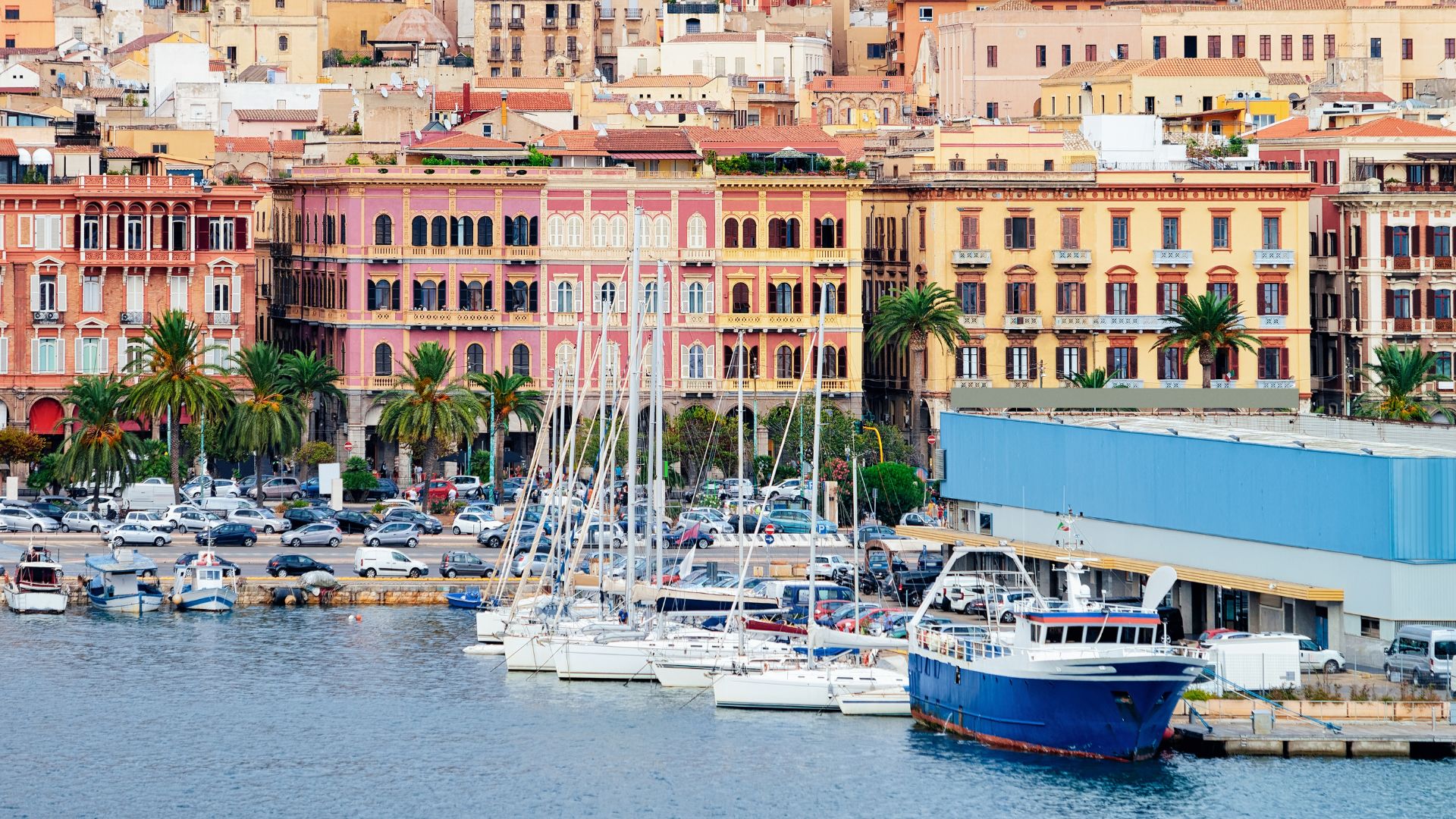
Essential Supplies and Packing Tips
I never leave without serious sun protection—the Mediterranean sun can be brutal, especially bouncing off the water. I always pack SPF 50+ sunscreen, UV shirts, and a big hat. Polarized sunglasses are a must for spotting rocks and hazards below the surface.
Even with all our tech, I don’t skip navigation tools. I bring:
- Up-to-date nautical charts
- A portable GPS (not just my phone)
- Multiple power banks
- A waterproof phone case
For food, I keep it simple: dried fruit, nuts, canned stuff. Water is crucial—bring more than you think you’ll need. I usually go with 3 liters per person per day. A small cooler helps keep things fresh.
I always toss in a basic first aid kit, seasickness meds, and a couple of quick-dry towels. For overnight trips, I pack light, breathable clothes and a jacket for those cool sea evenings.
Charting the Course: Top Secluded Beaches to Explore by Boat
The eastern coast of Sardinia hides some of Italy’s most jaw-dropping beaches—many of them only reachable by boat. Cruising these blue waters, I’ve stumbled on hidden coves that most tourists never even hear about.
Cala Mariolu: Crystal Waters and Towering Cliffs
Cala Mariolu floored me the second our boat rounded the cliffs. Locals named the beach after monk seals—“mariolu” means “little thieves” because the seals used to swipe fish from nets. The “sand” here is actually tiny white pebbles that look like rice grains.
When I jumped in, I could see straight down to the seafloor—at least 50 feet! The turquoise water pops against the sheer limestone cliffs.
If you want the place to yourself, go early in the morning. I anchor on the northern side, where the water stays calmest. Don’t forget snorkeling gear—the rocky underwater world is buzzing with colorful fish.
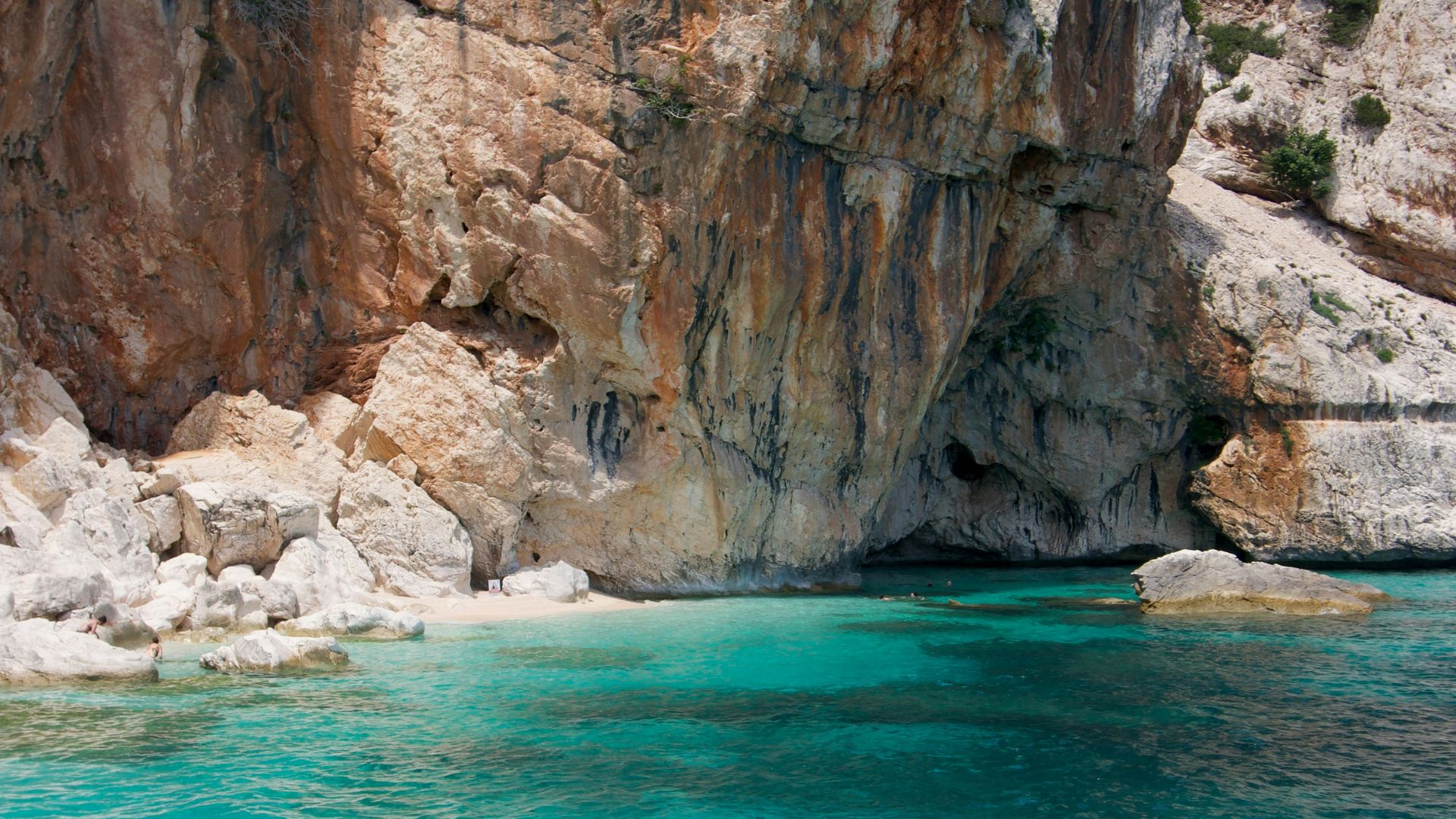
Cala Luna: A Serene Escape for Nature Lovers
Pulling up to Cala Luna by boat, the half-moon shape and dramatic cliffs hit you right away. The sand mixes with smooth pebbles, and the water shifts through every shade of blue.
Six big caves line the back of the beach. I spent hours wandering through them, escaping the midday sun.
A little freshwater pond sits behind the beach, fed by a spring and home to all kinds of plants. Even though Cala Luna is a bit more popular, arriving by private boat let me dodge the big crowds.
Pack a picnic—there’s not much in the way of facilities. The beach faces west, so the sunsets on the limestone cliffs are something else.
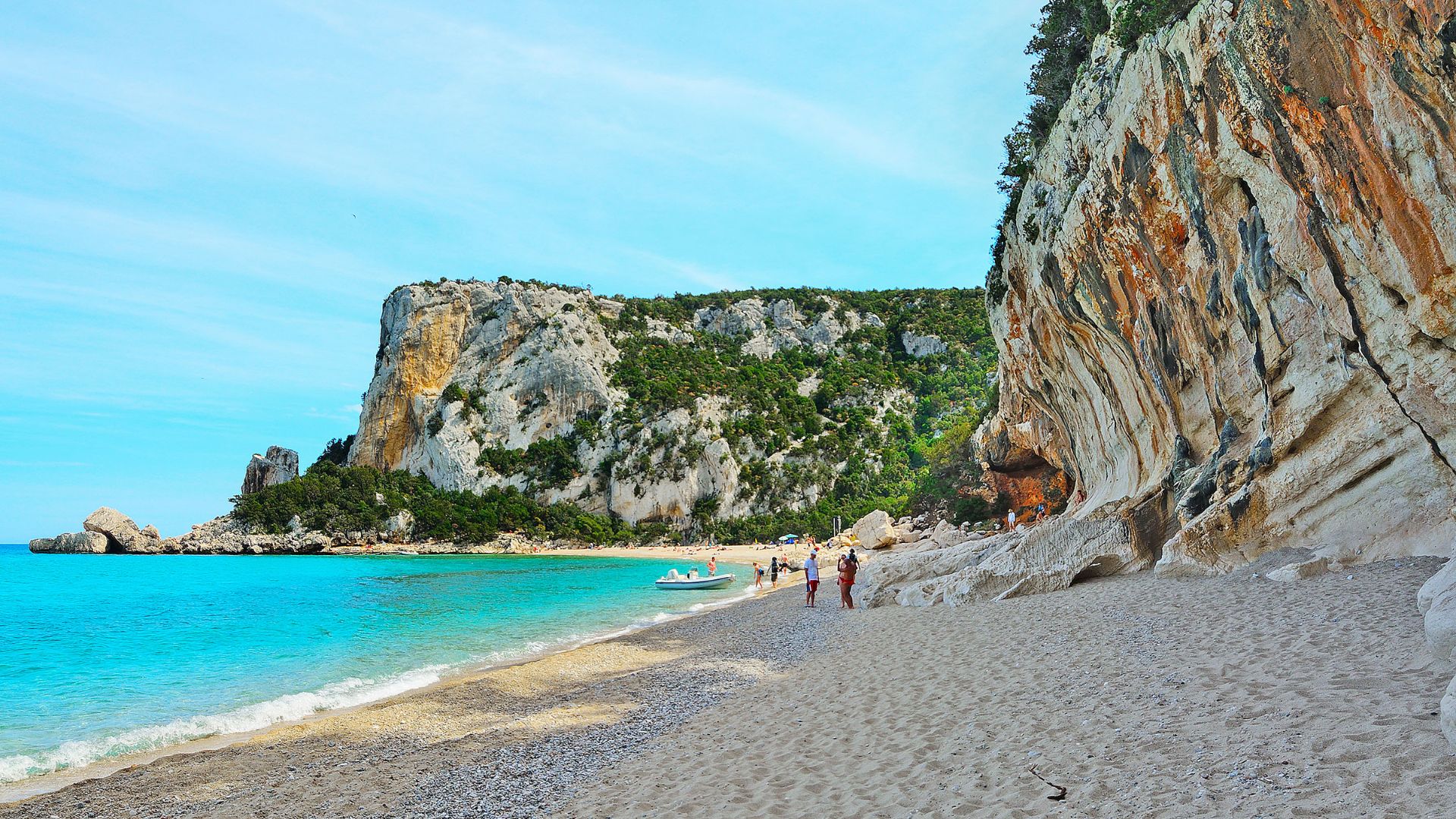
Cala Goloritzè: The Iconic Turquoise Cove
Cala Goloritzè really is the crown jewel of Sardinia’s beaches. That limestone spire, Aguglia, shoots up from the coast and makes the whole place feel otherworldly. The blue of the water almost doesn’t look real.
As I approached by boat, I watched the water shift through every possible shade of blue. The cove is tiny, hugged by rock formations that throw plenty of shade.
Swimming here feels like floating in glass. The visibility underwater is wild—it’s a dream for snorkelers, with fish darting everywhere.
Since 1995, the area’s been protected, so you can’t anchor right at the beach. I moored a bit offshore and swam in, which honestly made it feel even more like an adventure.
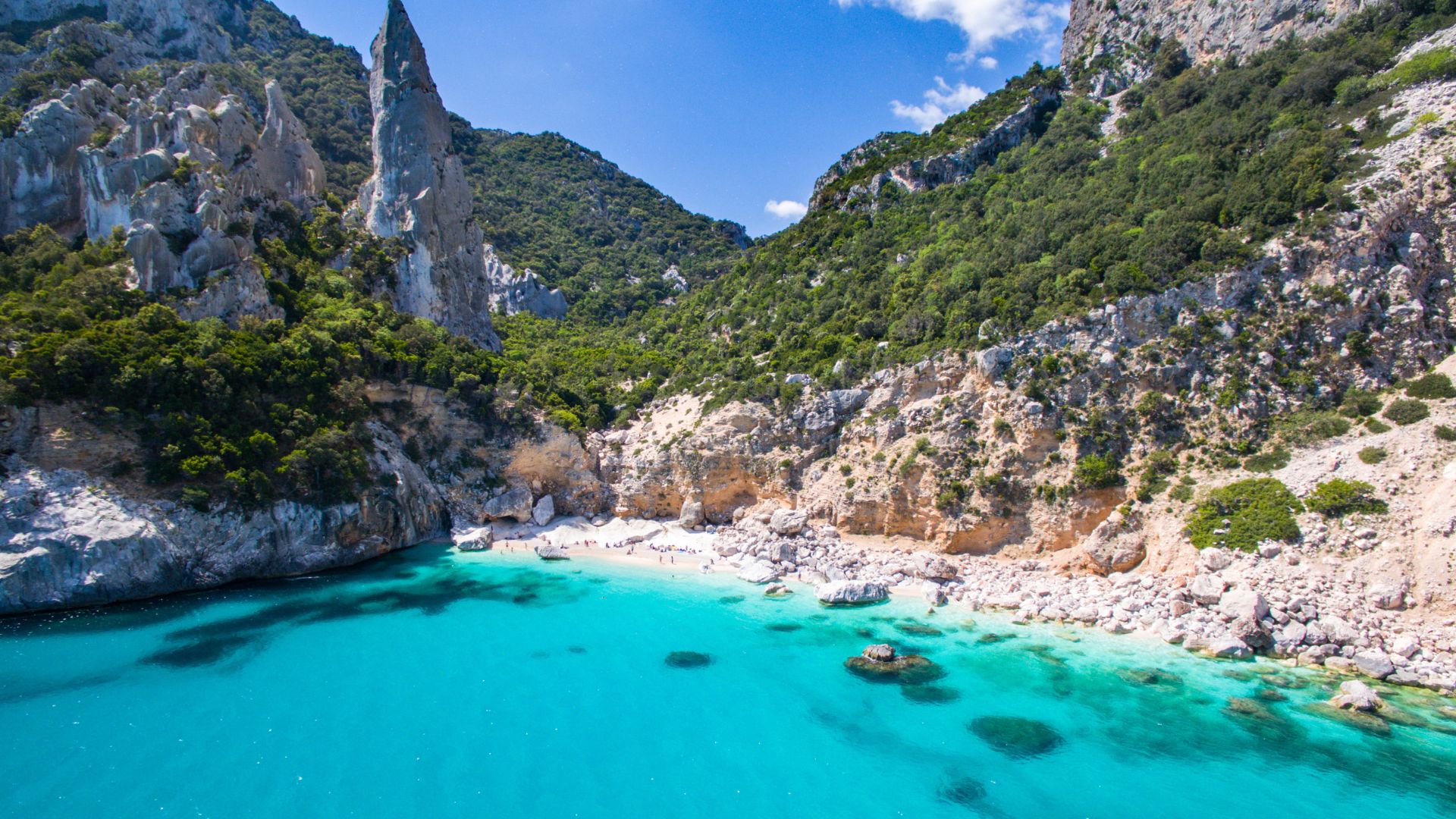
Navigating the Maddalena Archipelago: Island Gems Off the Beaten Path
The Maddalena Archipelago sits just off Sardinia’s northeast coast, and it feels like a secret world. These islands have crystal-clear waters, hidden coves, and beaches that somehow stay untouched.
La Maddalena: Sardinia’s Island Heartbeat
La Maddalena is the main island and a great place to start. I hopped a quick ferry from Palau—it only takes about 20 minutes.
The main town is full of colorful buildings and winding little streets leading to the harbor. I found local restaurants serving up fresh seafood and Gallura classics like zuppa gallurese.
I’d stay at least two nights on La Maddalena if you can. That gives you time to check out the beaches and book boat tours to the other islands. Bassa Trinita beach is a must, with its turquoise water and granite rocks that form natural pools.
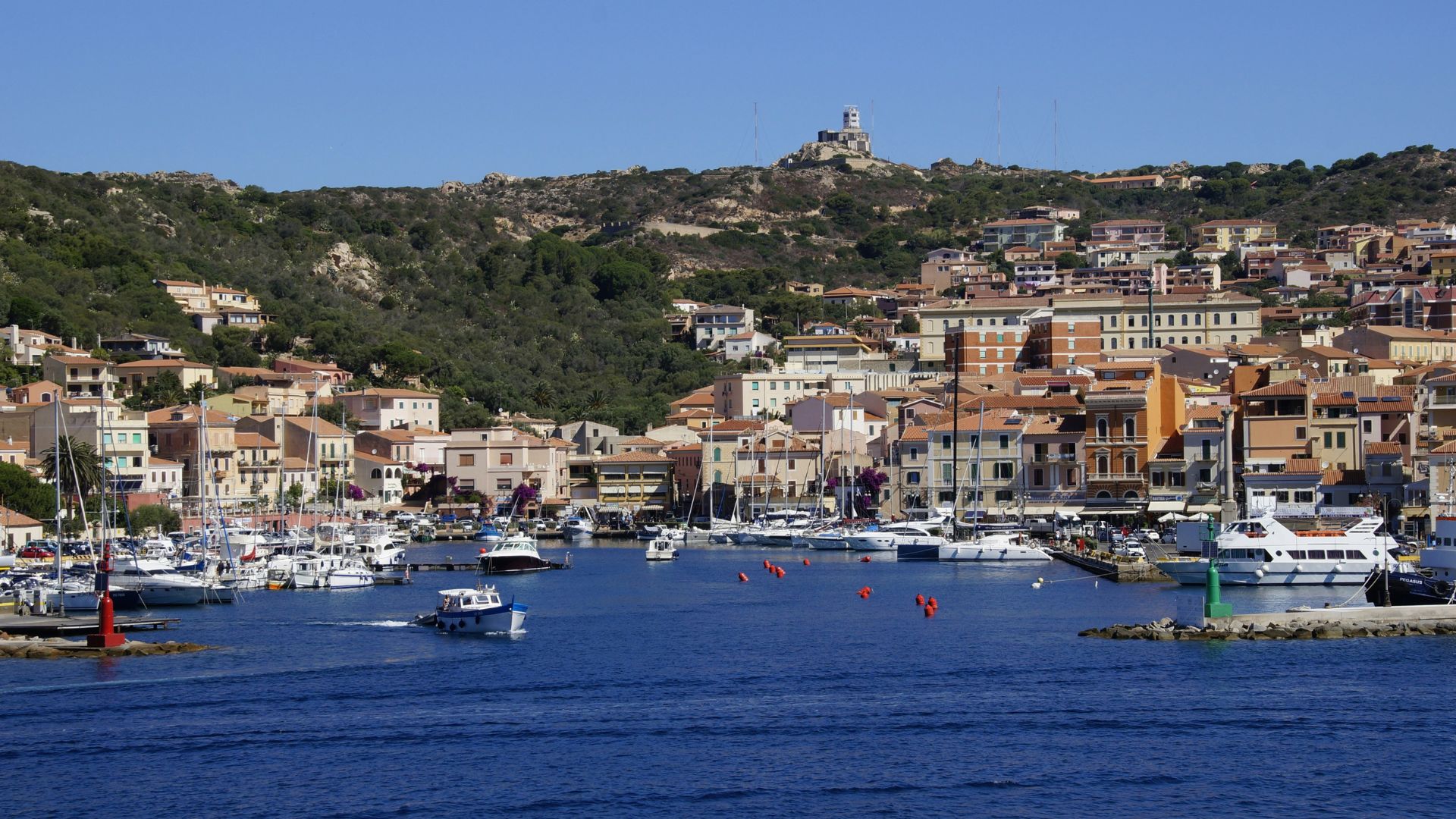
Budelli and Its Pink Sand Miracle
Budelli’s claim to fame is Spiaggia Rosa (Pink Beach)—honestly, it’s unlike anywhere else. The sand gets its pink color from crushed coral and shells.
You can’t walk on Spiaggia Rosa anymore to protect it, but boat tours swing by for close-up views and photos. I took a 6-hour tour that circled the island and stopped for swims nearby.
The water here is so clear it’s almost unreal—perfect for snorkeling. Budelli is uninhabited except for a caretaker, which just adds to the wild vibe. Most boat tours let you swim in the protected coves around the island.
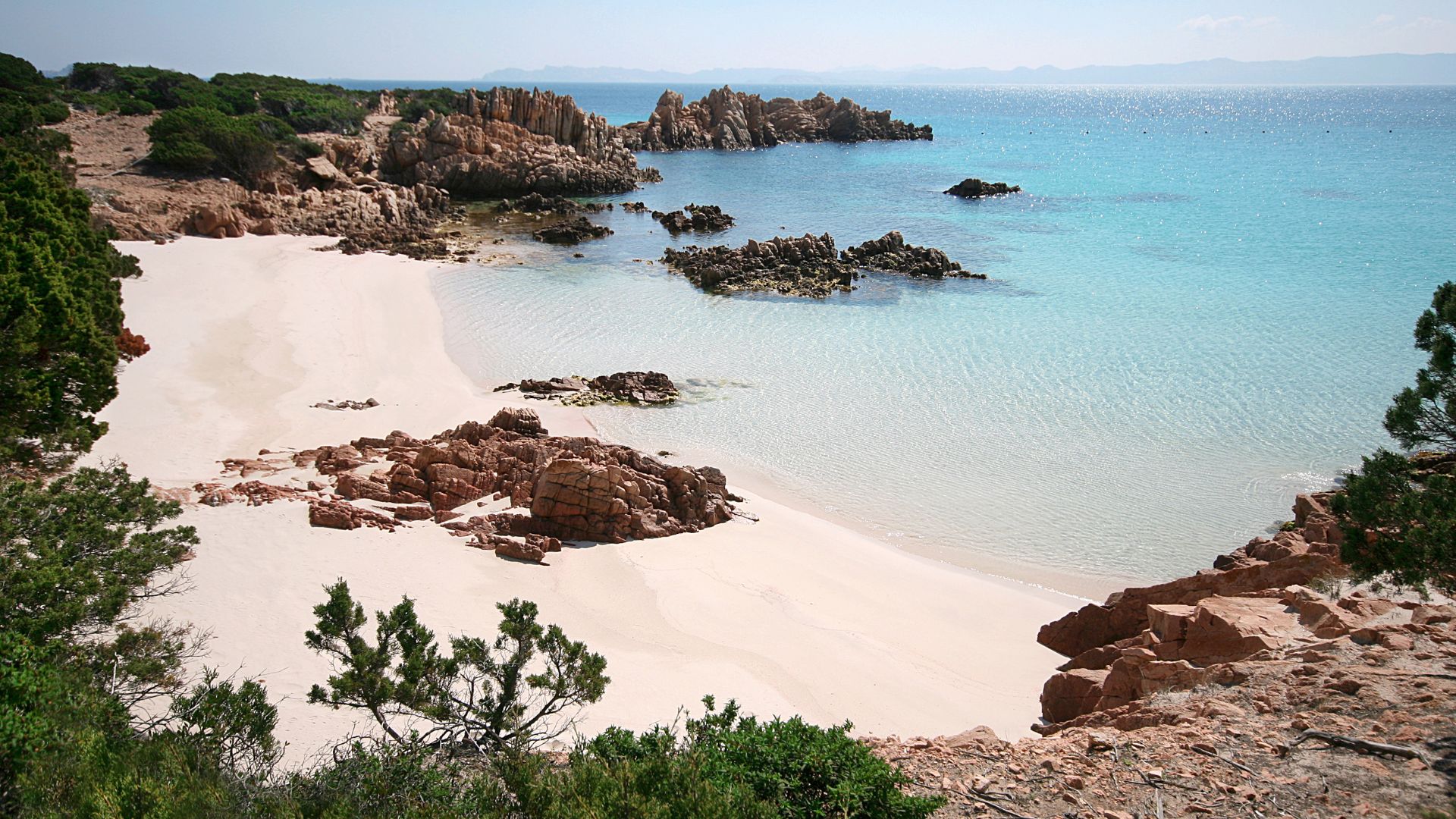
Caprera and Spargi: Pristine Shores and History
Caprera mixes natural beauty with a bit of history. Giuseppe Garibaldi, the Italian unification hero, spent his last years here, and his house is now a museum.
The beaches are mind-blowing—Cala Coticcio, nicknamed “Tahiti,” has white sand and see-through water. I suggest hiking the trails for panoramic views.
Spargi has some of the archipelago’s most untouched and quiet beaches. Cala Corsara, with its granite rocks, forms little coves that are perfect for swimming. You’ll need a boat to get here—there’s no ferry.
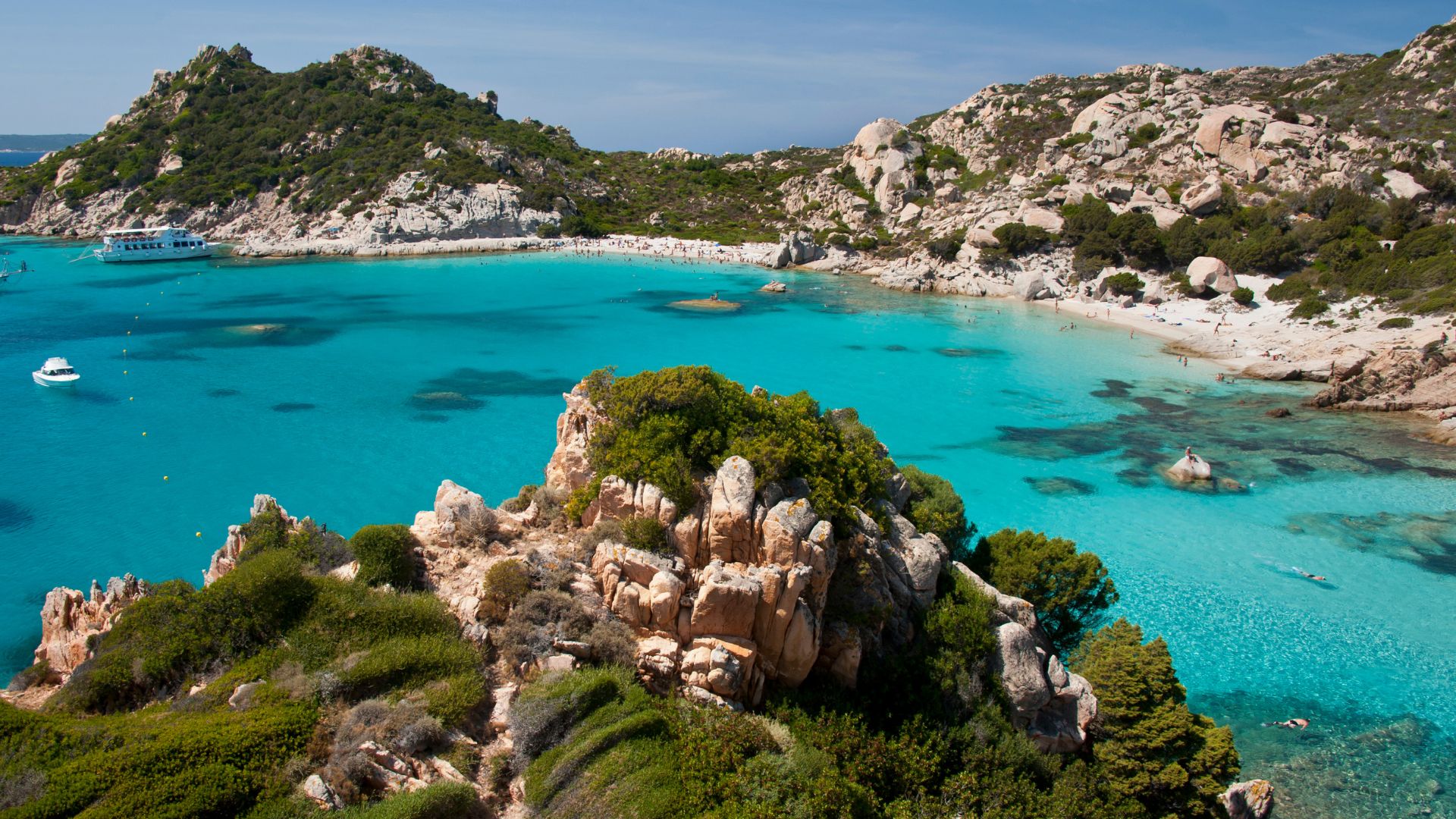
Santa Maria: Tranquility and Tradition by the Sea
Santa Maria island gives you a more laid-back experience, with a traditional fishing village feel. There’s just one tiny settlement but plenty of lovely beaches.
Cala Santa Maria turned out to be the perfect chill spot—shallow, calm water and soft sand. Families will love it.
The island keeps Gallura traditions alive. Sometimes you’ll even see fishermen unloading their catch. If you can, visit in May or June for warm weather and empty beaches.
I had some of the freshest seafood ever at the island’s lone restaurant. Many boat tours stop here for lunch, so you can eat local food while soaking up those unreal blue views.
Adventures Along the Coast: Water Activities and Natural Wonders
Sardinia’s coast isn’t just about beaches—it’s a playground for anyone who loves the water or nature. The Mediterranean here is so clear, it almost begs you to dive in.
Snorkeling and Scuba Diving in Sardinia’s Marine Paradises
The underwater visibility around Sardinia is next-level. I’ve seen 30 meters or more, which feels like swimming in a giant aquarium.
At Cala Mariolu, I tossed on my snorkel gear and watched fish dart around the rocks right near shore. Sometimes you can spot sea life just by looking over the side of the boat.
For bigger adventures, dive centers in Cala Gonone run trips to nearby reefs. These dives take you into underwater caves and introduce you to octopuses, groupers, and sometimes even barracuda.
Marine reserves keep these spots healthy. Tavolara Island and the Maddalena Archipelago have some of the best diving, with thriving marine life.
Exploring Hidden Caves and Grottos
Waves have carved Sardinia’s limestone coast into amazing caves and grottos—most only reachable by boat.
The Blue Marino Caves near Cala Gonone blew my mind. Stalactites hang above clear pools, and the light inside is magical. Most boat tours stop here so you can look around.
I’d pick a small group tour over a big one. Smaller boats slip into tighter caves and avoid the crowds.
Some caves even hide tiny beaches inside, perfect for a quick swim. When sunlight filters in, the water glows blue and green in ways you just don’t see anywhere else.
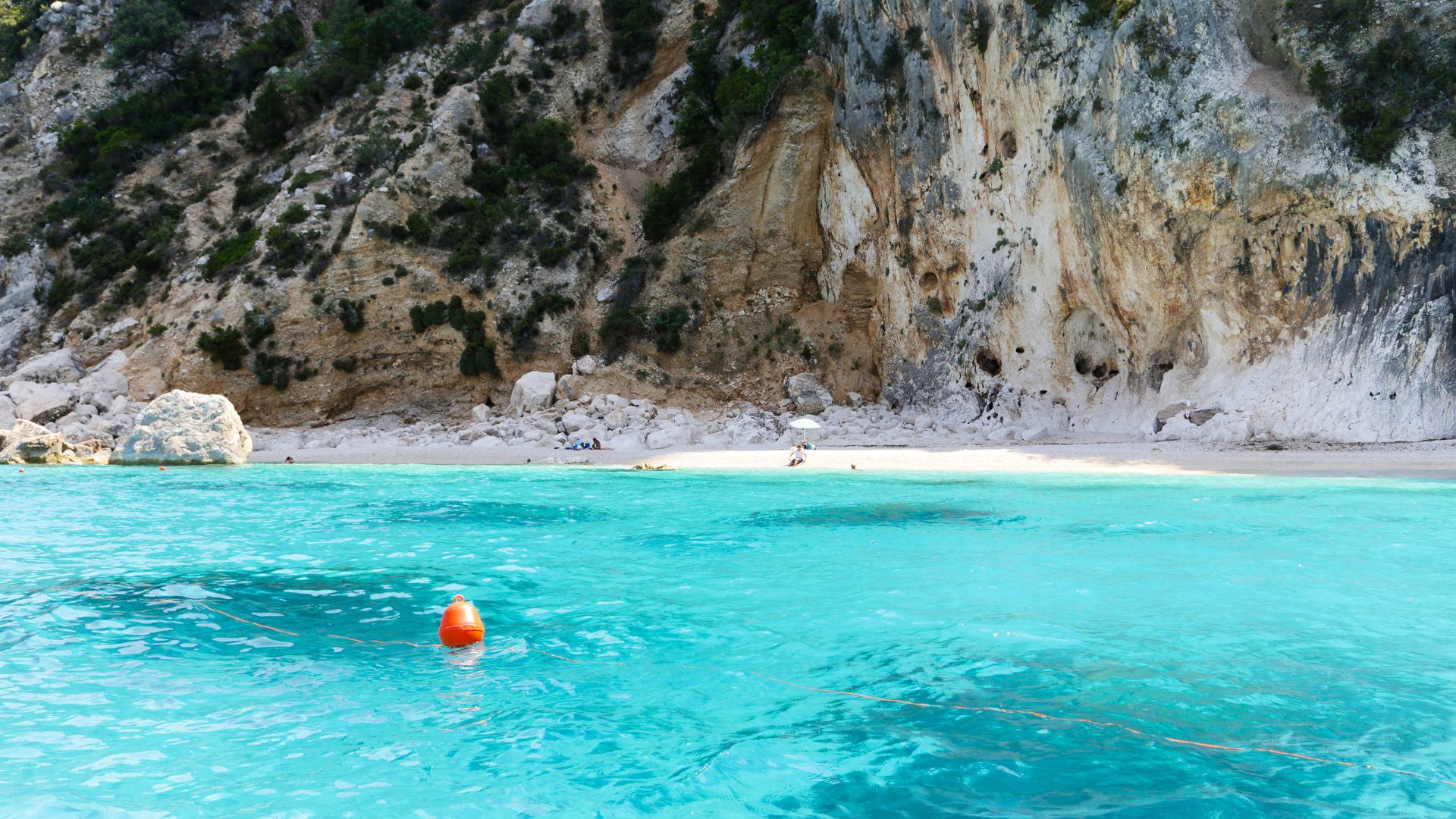
Kayaking and SUP: Paddle Your Way to Paradise
For a closer look at the coast, try renting a kayak or stand-up paddleboard (SUP). These let you poke around at your own pace and sneak into little coves that bigger boats can’t reach.
A lot of beaches, especially near Cala Gonone, rent kayaks and SUPs by the hour—usually starting at about €15. You don’t need experience if the water’s calm, and rental shops show you the basics.
Early mornings are the best—flat water, no crowds. I paddled out at sunrise one day and had the whole place to myself.
Keep your eyes peeled for sea turtles and dolphins. They show up more often than you’d think. If you have a waterproof phone case, you can snap photos without worrying about dropping your gear in the sea.
Practical Tips and Local Insights for the Ultimate Sardinian Beach Experience
Exploring Sardinia’s hidden beaches takes more than just hopping in a boat and hoping for the best. Over the years, I’ve picked up a bunch of useful tips from wandering around this Mediterranean gem, and I think they’ll help you get a lot more out of your adventure.
Seasonal Weather and the Best Time to Set Sail
If you want the sweet spot for discovering Sardinia’s secret beaches, aim for May-June or September-October. These months usually bring warm days—think 22-28°C—and you won’t have to elbow your way through crowds.
Once July and August roll in, the island heats up and the Mistral winds can really whip across the water. Trust me, boating gets tricky, especially if you’re not super experienced. I’ve found that mornings work best for boat trips—calmer water, clearer views, and that magical turquoise color really pops.
From November through March, the weather gets unpredictable. Most boat rentals and beach cafes shut down, so coastal exploring isn’t really worth the hassle.
Before you head out, always check the local marine forecast. The Mediterranean can go from calm to wild in no time.
Respecting National Parks and Nature Reserves
Sardinia’s coastline hides some protected areas that deserve extra care. La Maddalena National Park, up in the northeast, has some of the island’s most stunning beaches.
Whenever I visit these spots, I stick to a few non-negotiables:
- Drop anchor only where signs say it’s allowed—those seagrass beds need protecting.
- Take every bit of trash with you, no matter how small.
- Leave shells, sand, and wildlife alone.
- Pay attention to posted rules about where you can swim or snorkel.
Even at La Pelosa Beach, which isn’t in a national park, strict rules keep things pristine. They limit daily visitors, charge an entry fee, and you have to bring a beach mat.
Do a little research before you go. Some beaches need advance permits, and you can usually sort those out online.
Insider Tips: Local Cuisine and Beachside Eateries
A Sardinian beach day just isn’t complete without some local food. I’ve found the tastiest seafood at small harbors where fishing boats unload their catch early in the morning.
If you’re packing a picnic, don’t miss:
- Pane carasau (super thin, crispy bread)
- Bottarga (salty cured fish roe)
- Pecorino sardo (sheep’s cheese that’s honestly addictive)
- And a bottle of local Vermentino wine, because why not?
For a sit-down meal, skip the flashy places and look for a spot packed with locals. The best coastal restaurants usually have handwritten menus and whatever fish came in that day.
A lot of hidden beaches don’t have any facilities, so bring more water and snacks than you think you’ll need. If you stumble on a little family-run kiosk, definitely try their seadas—those cheesy, honey-drizzled pastries are something special.



Cultural Landmarks: From Domus de Janas to Coastal Villages
Sardinia’s beaches aren’t just about the water—they’re steeped in history too. You’ll find the mysterious Domus de Janas (“fairy houses”) near the coast, carved right into the rock as prehistoric tombs.
Honestly, I think mixing beach time with a bit of cultural wandering makes a trip way more memorable. Coastal villages like Bosa and Castelsardo feel like the perfect combo: you get sandy shores and centuries-old architecture all in one go.
When you head out:
- Try to visit in the early morning or late afternoon—trust me, it’s much quieter.
- Slip on some comfy shoes, since the ground can get pretty uneven.
- And please, don’t touch or take anything from archaeological sites. Gotta keep history intact, right?
Stone watchtowers line the coastline, reminding us of ancient defenses against pirates. Climbing one often rewards you with a killer view of hidden beaches below.
If you get a chance, chat with the locals. They keep old traditions alive—think boat blessings or quirky seasonal festivals—that most tourists never even hear about.

